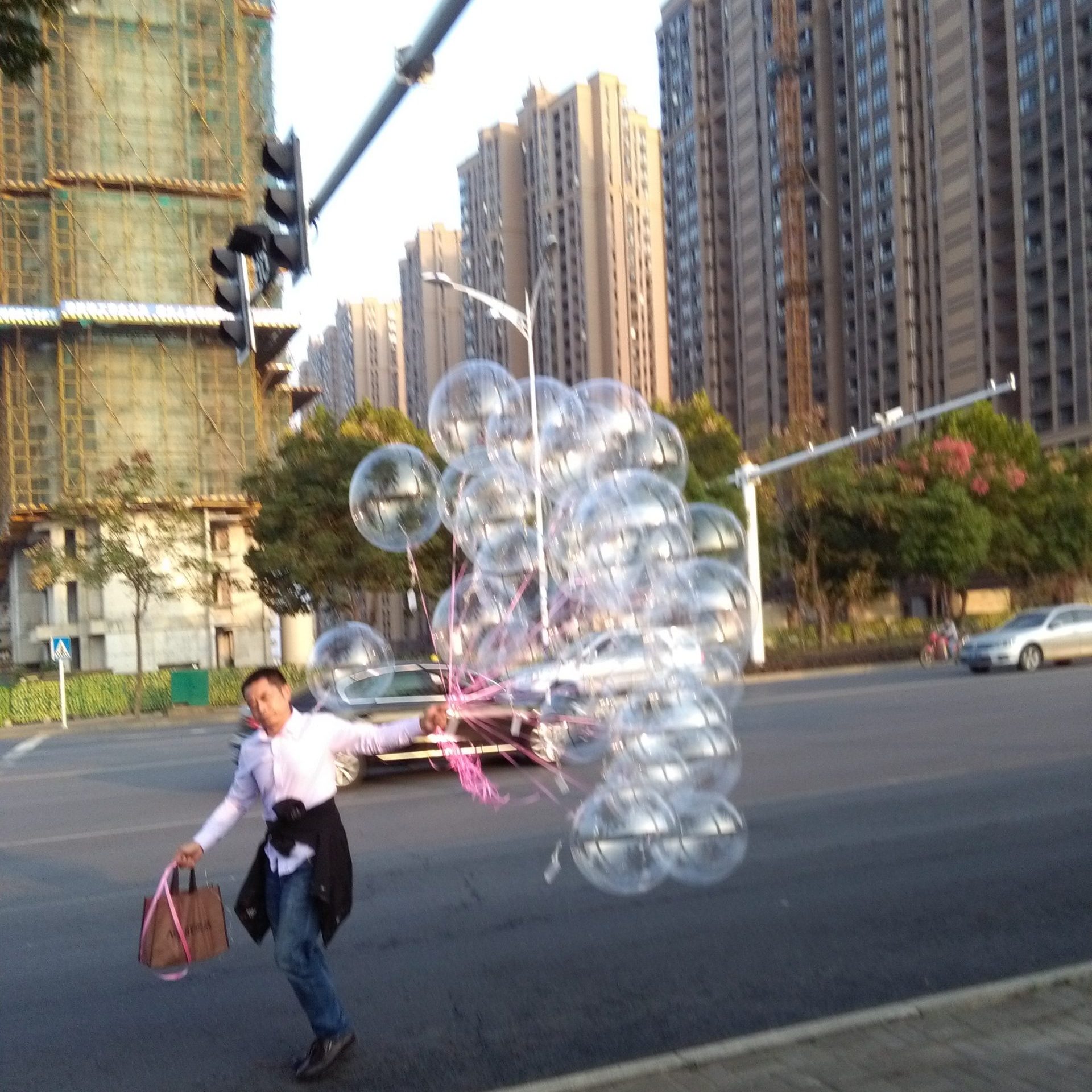(How to… Make Yourself Angry And Really Frustrated When Trying To Begin A New Hobby/Art/Business Such As T-Shirt Designs)
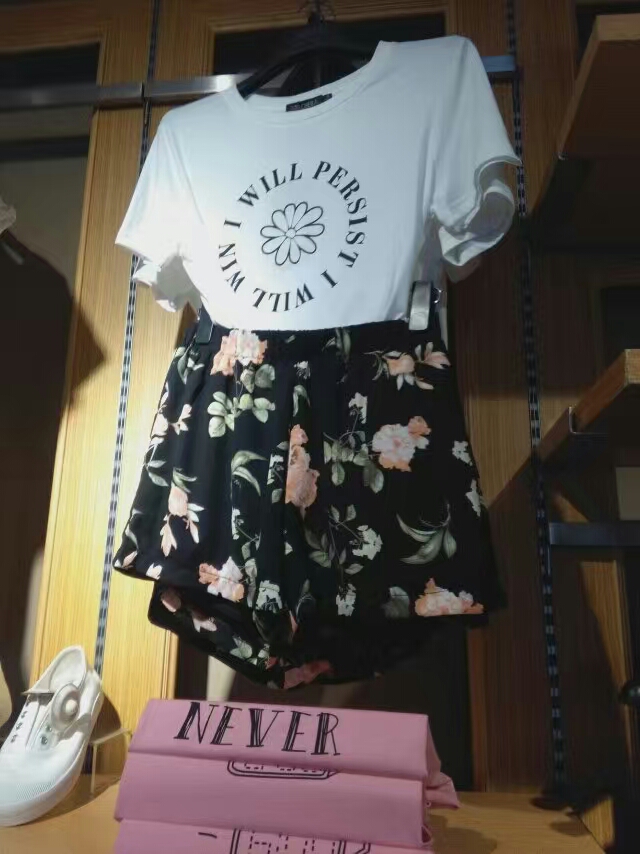
I know my posts usually have an air of meandering, almost self-masterbatory musings about them, as I sludge together photographs, themes and pseudo-theory. But for this one I would like to share my recent experiences and the many challenges in developing printed T-Shirts. This is more like a diary of struggle. Even so, I found in this activity some recurring themes relating to my time in China, notably in the ol’ ‘saving face’ charade, which I shall sprinkle onto the narrative below.
Beginning With You
Open source information places the expert alongside the amateur. These YouTube men ‘in the business’ who greeted me with signature hand gestures and seemed to work from their basements were my source of guidance. Searching specifics that an amateur newly acquiring industry vocab included hot topics like; ‘sublimation and heat transfers differences?‘ and ‘sublimation on 60% cotton possible durable?’ to ‘sublimation vs heat transfers vs plastisol’ and eventually, ‘what exactly is sublimation anyway?’ Every video had something useful to give, but the core of my questions were hardly ever fully answered, or rather, the questions I should have been asking didn’t welcome themselves. Whilst contradictions are confusing, likewise repeat opinions do not equal validation. No amount of reviews or opinions will guarantee similar outcomes, because there are too many hidden aspects that can get over looked. In the end, you must be willing to learn some things the hard way and accept throwing money in the face of greater knowledge.
It’d be unfair to call them all homeboys in baseball caps, but a large portion of it was young(ish) boom box men trying out samples from corporate companies and reviewing them, complete with very long introductions. Now, saying all this, I intend to do the very same thing…
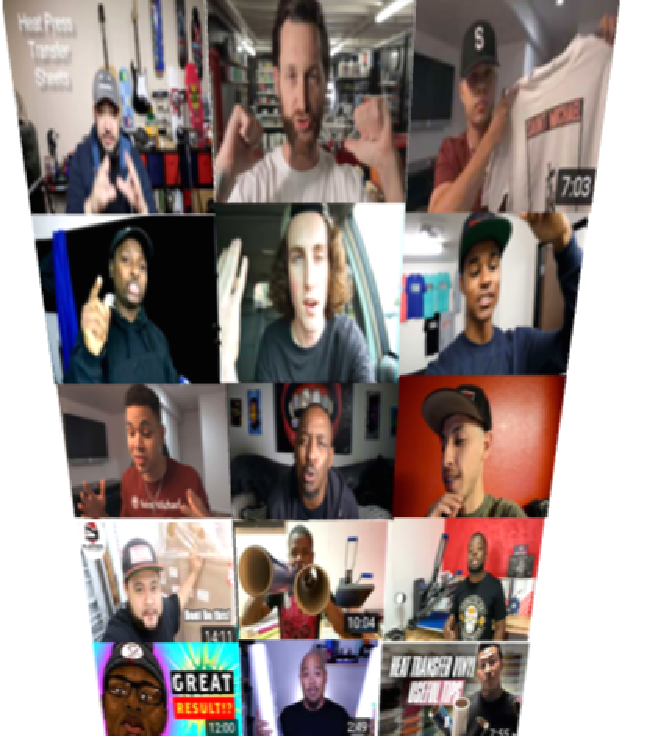
Saving Face Or Wasting Time?
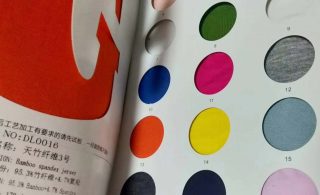 I had a heat press (for pressing designs) and I had my A3 scanner Epson WF7720 inkjet printer which I had read to be the better option for heat transfers (a paper transfer used for printing)… but I hadn’t found my actual heat transfers yet. (More on that later). I also had my t-shirt supplier; Gilden, 100% cotton that came in various weight options, so I was almost ready to go. Although I was still actively looking for a more ethical company since I had heard some negative press about them, but finding a suitable alternative was proving very difficult and time consuming. I had initially wanted to use bamboo, because I had read that it is quite a versatile, breathable material, long lasting and importantly, offers a more eco friendly stance. However, it was very difficult finding a suitable match. The company that had provided them kept sending the wrong samples, which were too thin or not 100%. I had asked them if they had thicker 100% bamboo t-shirts ‘yes we have’ was the reply. But after two sample books which were neither 100% bamboo nor thick enough, I gave up.
I had a heat press (for pressing designs) and I had my A3 scanner Epson WF7720 inkjet printer which I had read to be the better option for heat transfers (a paper transfer used for printing)… but I hadn’t found my actual heat transfers yet. (More on that later). I also had my t-shirt supplier; Gilden, 100% cotton that came in various weight options, so I was almost ready to go. Although I was still actively looking for a more ethical company since I had heard some negative press about them, but finding a suitable alternative was proving very difficult and time consuming. I had initially wanted to use bamboo, because I had read that it is quite a versatile, breathable material, long lasting and importantly, offers a more eco friendly stance. However, it was very difficult finding a suitable match. The company that had provided them kept sending the wrong samples, which were too thin or not 100%. I had asked them if they had thicker 100% bamboo t-shirts ‘yes we have’ was the reply. But after two sample books which were neither 100% bamboo nor thick enough, I gave up.
On another occassion I travelled for an hour and a half by bus to this company which turned out to be middle-men sellers. The contact had explained that I could have a look at their materials to gauge what type of printing I wished to take forward. But when I arrived there were just a few samples on a shelf fighting for territorial clutter and she wouldn’t respond when I asked her which method was which. She explained that she could ask the producers, but right now they were busy with flogging cheap hand sanitizers for the Covid consumer. I asked if the transfer product for sublimation powder was any good – it promises to allow this brilliant embedded sublimation ink to stay on cotton (previously imnpossible) – and she didn’t know, but instead showed me a buyers’ review from an American who’d written, ‘great product’. I left, feeling peeved and apologetic in strange measures.
Some companies online promise to be able to do things that you can’t usually do with the materials at hand. such as being able to print embedded designs onto cotton which usually only works for polyester clothes. Or to be able to use heat transfers that ‘self weed’ (cut the design out for you) when printing. To use a heat transfer usually requires printing and cutting it out in some way. An exception is plastisol which ‘self weeds’, however its weakness is that it doesn’t leave a soft touch, more of a plastic additional layer that ‘sits’ on top of the cotton, like a sticker. One such company offered many options and I was eager to get in touch and try them out, but again communication was a hurdle with the seller… see the exchange below for mild amusement…
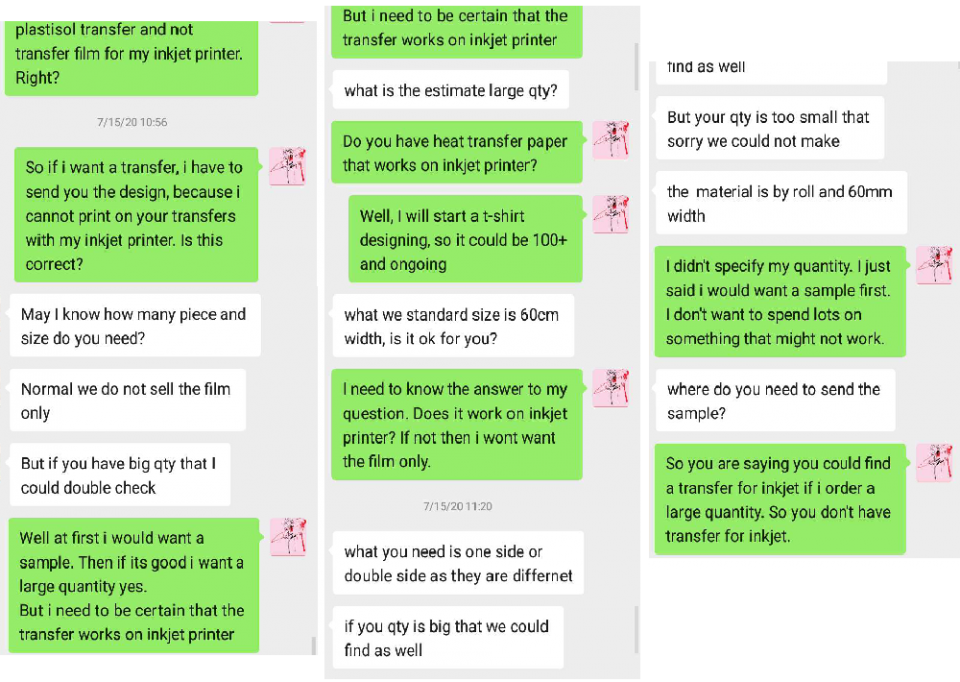
Field Research: DIY Is An Aesthetic Not A Philosophy, DIY Is Big Business
So instead I went social analogue and I visited a kind of makerspace workshop downtown in the famous 三坊七巷 (three lanes seven alleys) in Fuzhou where I am now living. I have noticed a minor surge of these places where you can make your own jewelry, ceramics, prints or crafts etc. Usually in very commercial centric places like malls or tourist districts. They are a welcome addition without a doubt, however I wouldn’t call them true makerspaces or studios becaue they operate more on a commercial service-based system where people pop-in and make designs from a limited set of outcomes and materials. You essentially pay for the experience to make something that they could (and often do) sell for less. Anyway, I had come to see their artist made DIY t-shirt prints called ArTees. The t-shirts were being charged at 120元 and they looked nice enough but the designs ‘sat’ ontop of the material and had a plastic feel which was not my preference. Also the t-shirts were surley mixed blend. I asked the woman who was running a workshop how they were made and if the artists were local. She was very helpful and her English far exceeded my Mandarin (no suprise) and she was able to explain that the designs are sent off to a fella on Taobao (Chinese version of ebay, but better) who prints them onto film sheets and sends them back to them which they heat press onto tees. I contacted the man and he explained that I would need my own machine to do this myself or he could do it for roughly 5元 per design. I was suprised that the ArTees had opnely shared this information, which occured to me that this was not seen as a form of cheating or dishonesty. Instead, the degrees of what constitutes DIY is different and perhaps in a country where the copy is intertwined with learning (the charcter 学习 relates to both learning and imitation) the notion of perfecting is a systematic procedure foremost. I realised two things; firstly, the DIY place was making huge profit margins and secondly that this was not the way I wanted to produce as an artist selling T-Shirts. I wanted to be involved in the full process. You hear that China? This Commie wants Full Control Of The Means Of Production!!!
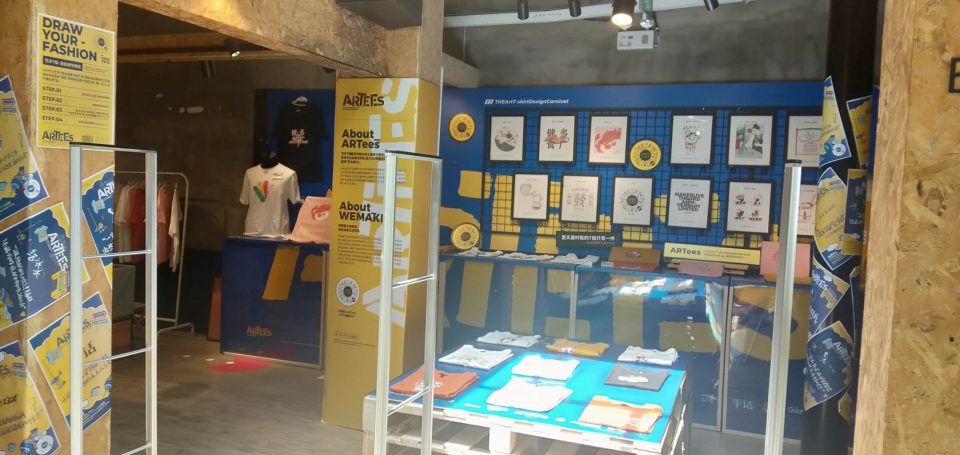
After much research and deliberation I knew less of what I did want and even less than I thought I knew to begin with. But I at least knew what I didn’t want and this was a start.
- I didn’t want my material to contain polyester or to come from a sweatshop
- I didn’t want to use vinyl or any print that ‘sits’ too heavy onto the material
- I didn’t want to use a third party to complete my designs
- I didn’t want anything ‘revolutionary’ that was unproven and high cost at this stage
- I didn’t want to make anything that had a less than a 12 month lifespan
I just needed to start trying heat transfers. My first attempt was unsatisfactory. I had purchased the transfer from the same factory that made my heat press and whilst I was less impressed with their transfers, time was ticking and I needed to do some tests. I ordered a batch. The design had that ‘sticker’ quality, like a vinyl print, only without the durability of a vinyl print. One stretch and it was showing its weakness. It was shiny, too thick and appeared amateur. Unfortunately, I had a batch of 100 sheets on my hands now, so decided I would use them for cotton bags instead or experiment with them as posters and stickers. Money wasted, lesson learnt.
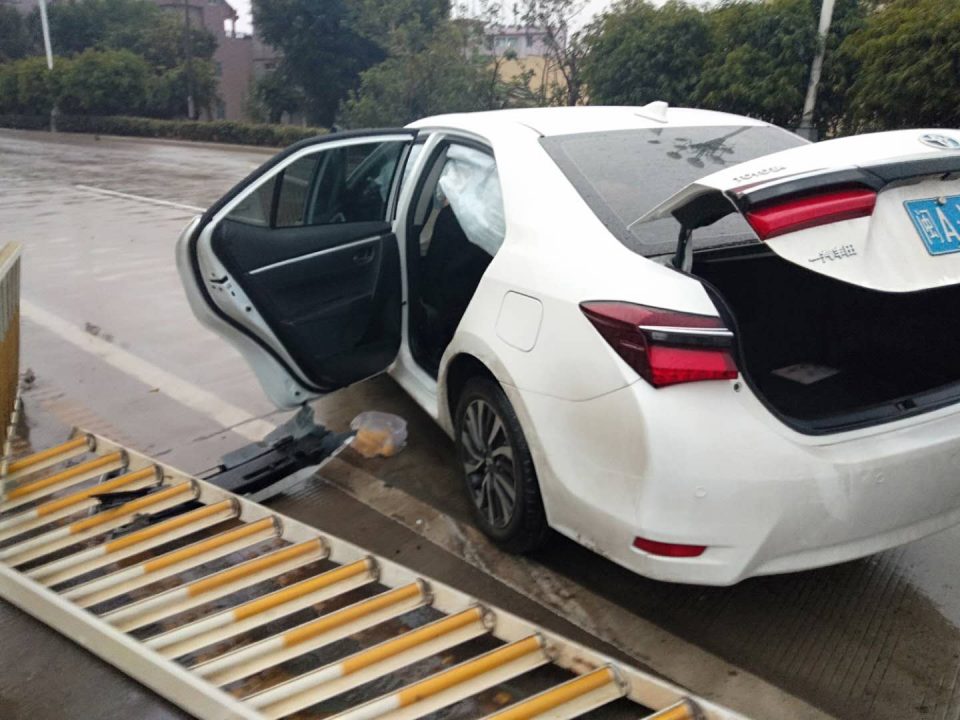
So I tried a new transfer and this one was much closer to that screen print that eludes us all when we don’t actually want to screen print but probably should. I was feeling optimistic. However….
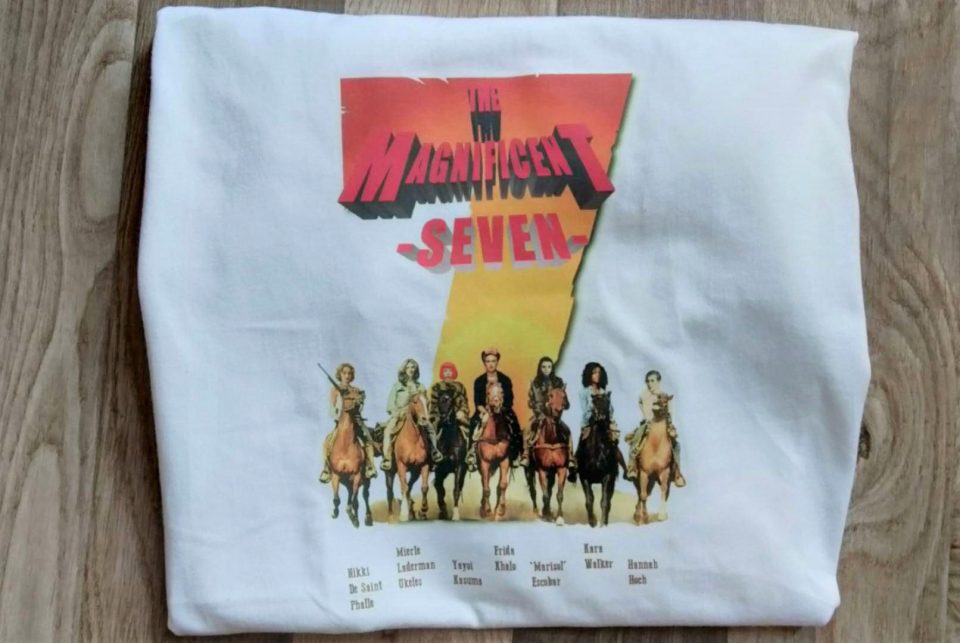
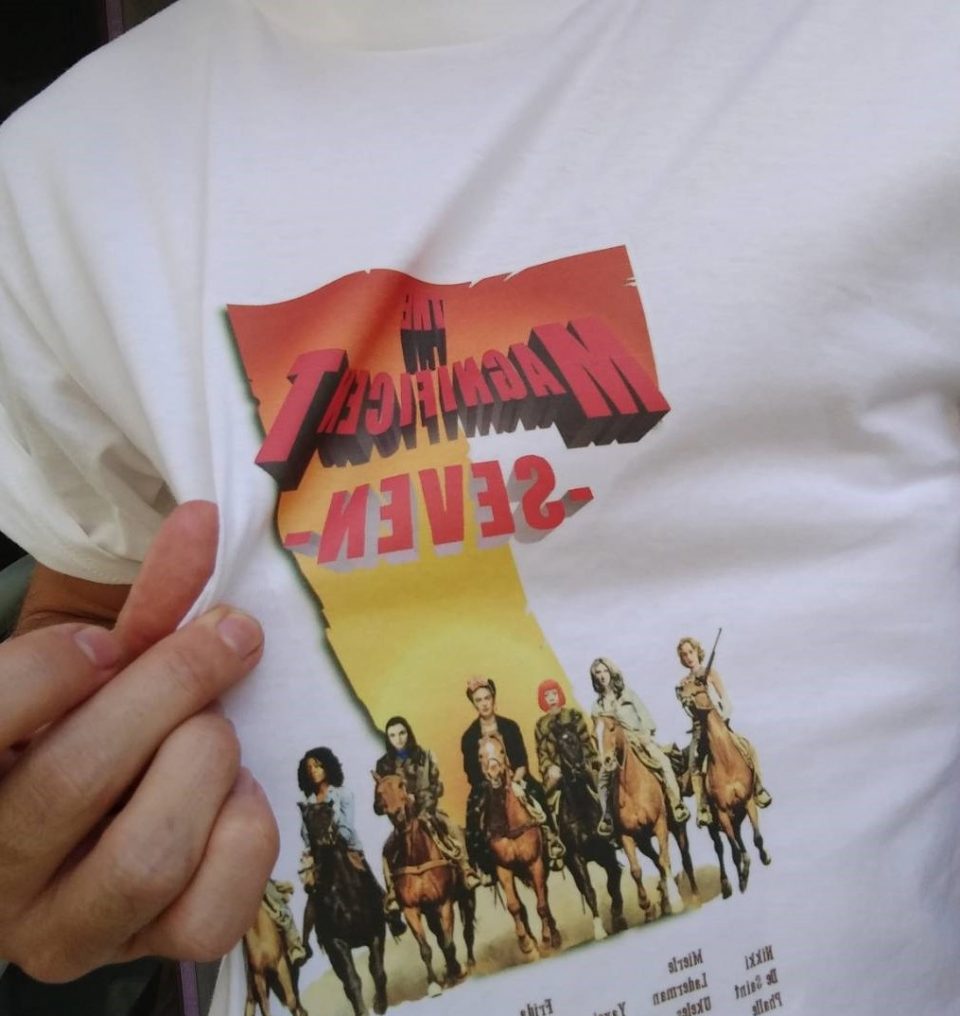
Problem With Durability
…Most people would be satisfied with this outcome and I was. But then I gave it a wash. After the first wash it had lost some print within the design. Not a great amount and most people could consider it a ‘vintage look’, but enough for me to realise that it wasn’t up to standard. I did a further three washes and whilst the design remained the same, I wasn’t satisfied overall. I had heard that the reason may have been the t-shirt itself, since many are given treatments which can effect the print. But this was a Gilden t-shirt, a staple diet among the printing community. Another reason may have been my pressing. But I had tested it on another t-shirt with a higher pressure and the result was even worse. The seller said it was possibly my pressing. I disagreed.
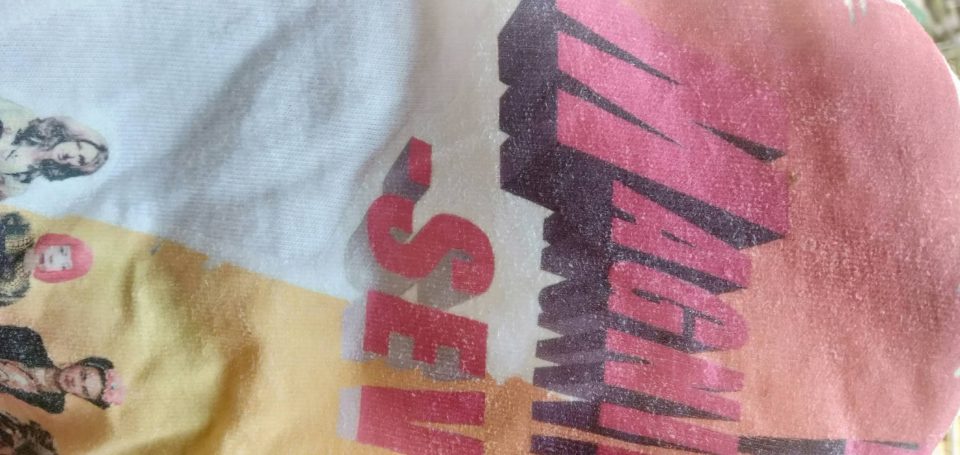
Apparently The Problem Is my Ink
Follwing my disappointment with the durability of my transfer I had found a company on Alibaba who supplied the renowned Neenah Jet Pro Soft Stretch, a U.S brand that promises durability and stretch. However they informed me they would not have enough supplies for another two months, but could provide a sample and recommended the Neenah 3G Opaque. I was most interested in the Soft Stretch because it offers a softer feel in the long term if you stretch it slightly immediately after peeling. So I was quite disappointed. To add further salt in the wounds they also said that my ink (dye based) was not the best method and that pigment ink is superior, which may explain why the design on my t-shirt had not proven durable enough. Even though I had heard otherwise from an English expert on You Tube who said it was all nonesense. So I was faced with the potential dilemma of changing my inks or possibly even buying a new printer altogehter. I asked them to instead send me samples of their pigment based inks and some blanks for me to test my own ink onto. That way I could deduce the facts from the fiction. They also sent some Chinese brand which I hadn’t requested. Here is the process of testing all three:
Testing: Neenah’s Jet-Pro SoftStretch, 3G Opaque & some Chinese brand I didn’t ask for
“Wouldn’t it be funny if the Chinese brand that has no name turned out to be the best one” I rhetorically mumbled to myself when the three transfers arrived.
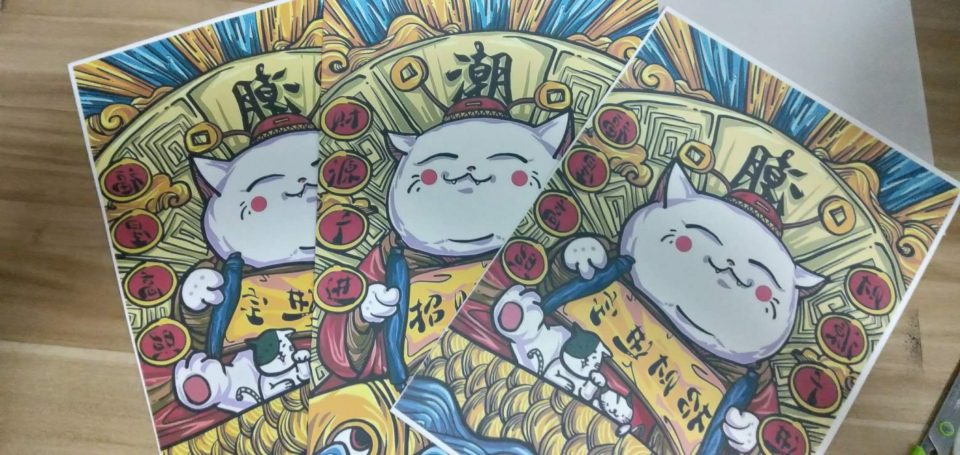

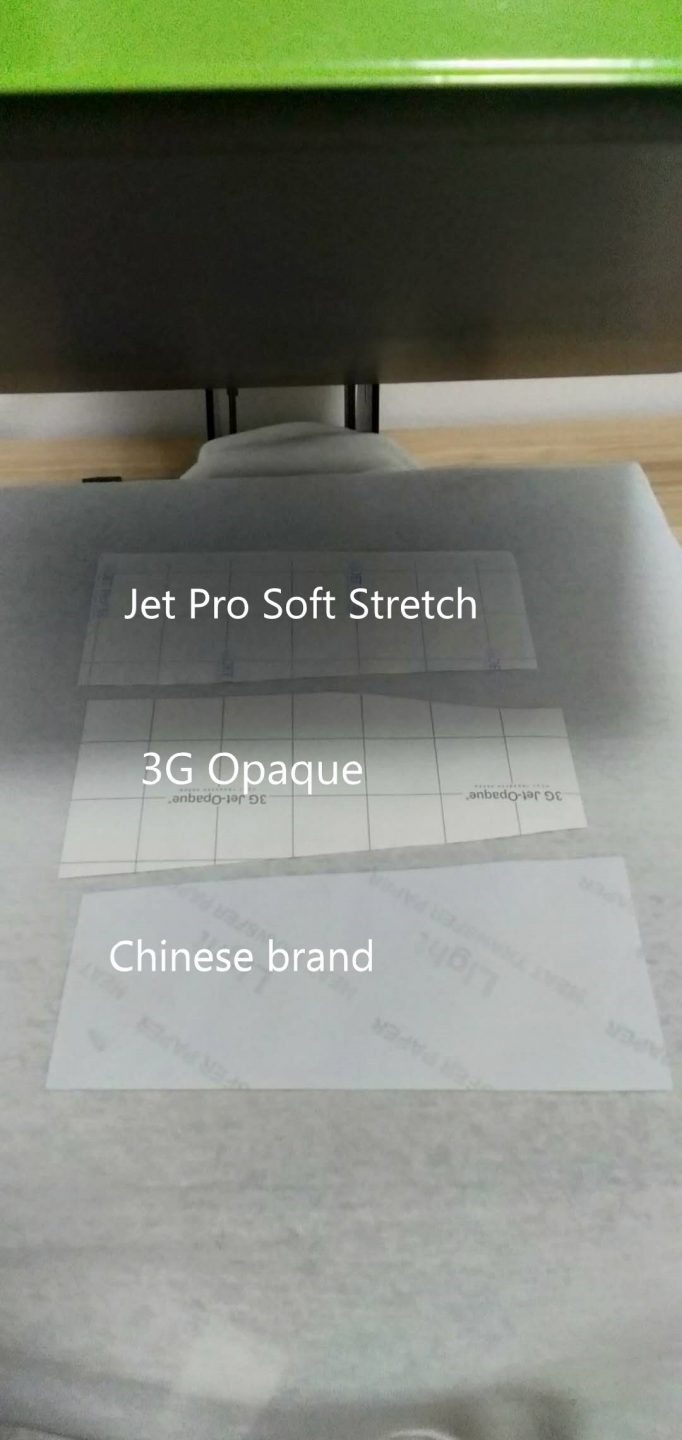
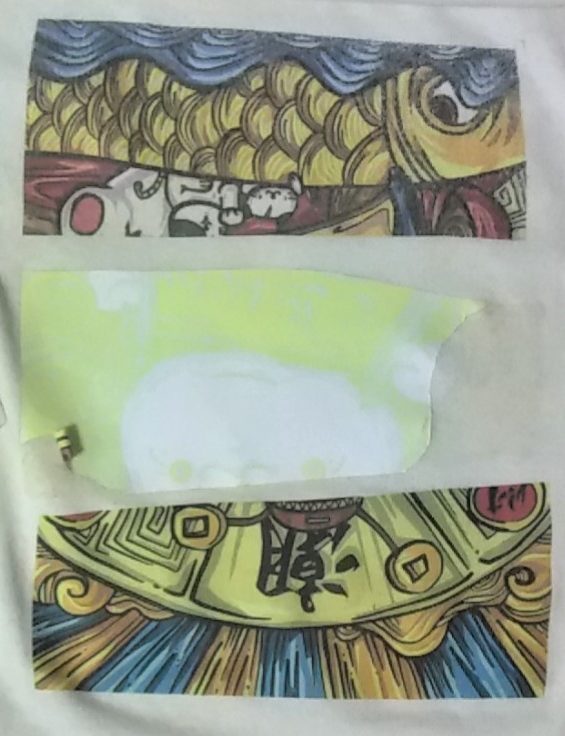
The three transfers could all be pressed on 76 °C (lower than I usually opted for with my other transfers) and could all be pressed for 30 seconds. The one key difference was that the 3G Opaque was a cold peel, meaning I must wait for it to cool before peeling the design.
As the results show, the 3G Opaque wasn’t transferring. I tried a second time later on, raising the temperature to 86 °C and pressing for more than the recommended 30 seconds and giving a second press for an additional 5 seconds. But to no avail. The Chiense brand came out vivid and felt good to the touch. The Soft Stretch felt rough and looked dull and patchy.

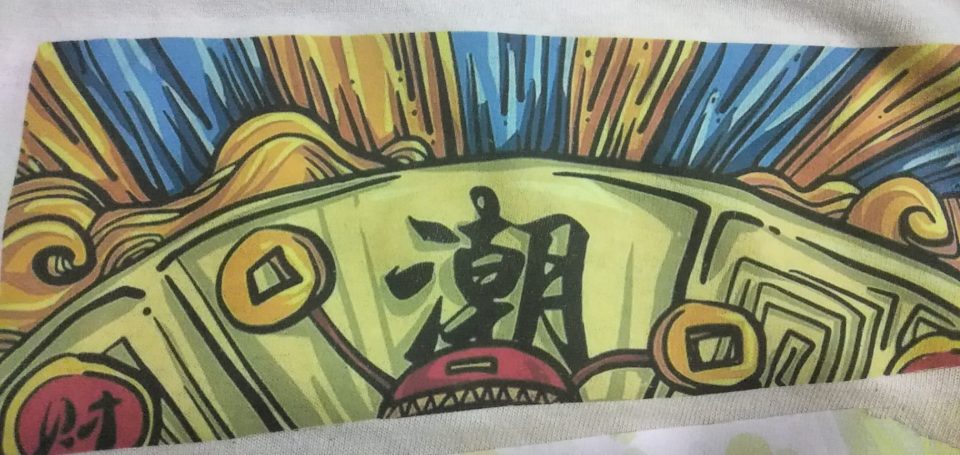
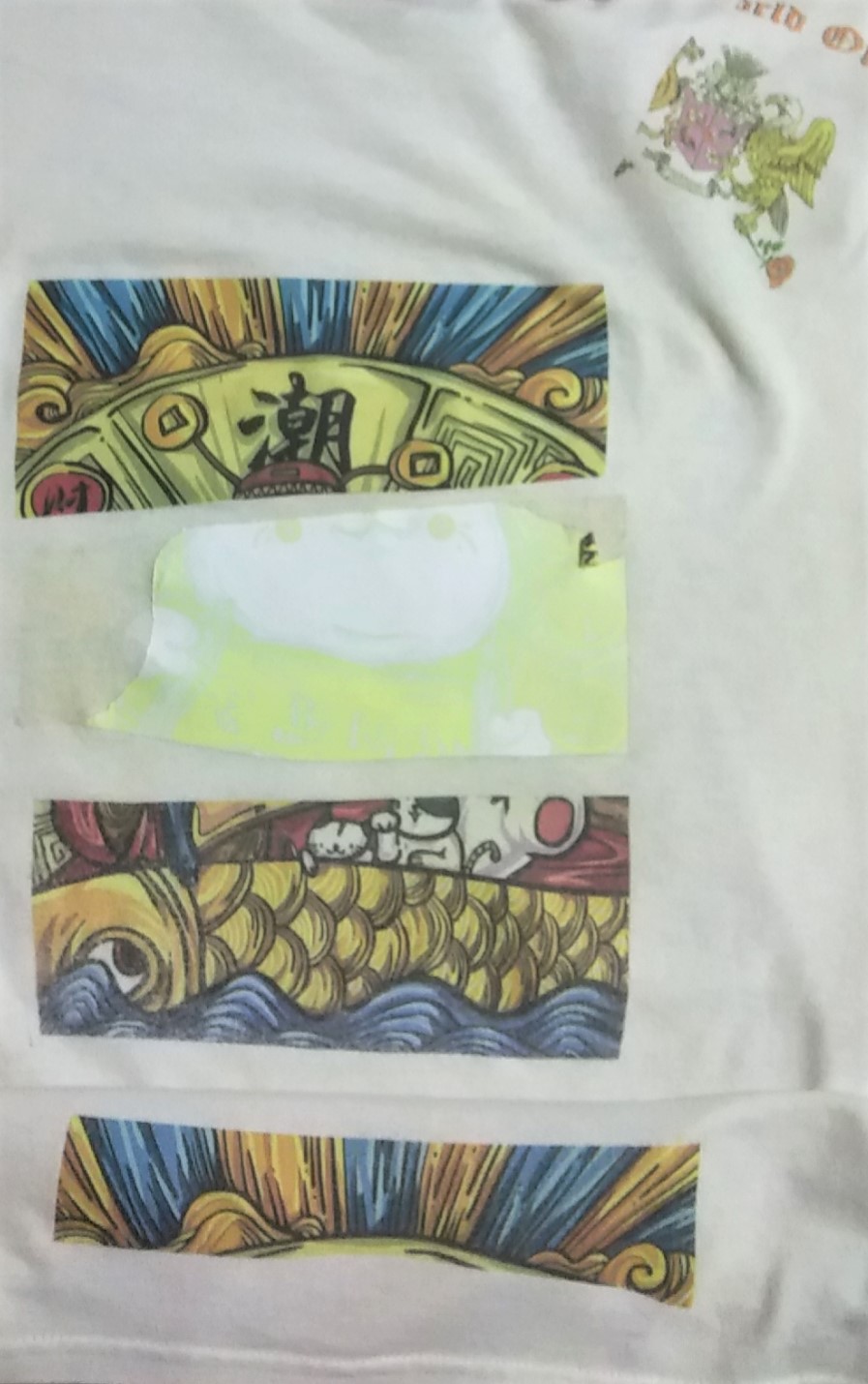
I gave the Soft Stretch another chance to prove itself, printing an additional transfer at the bottom, but the result was similar.
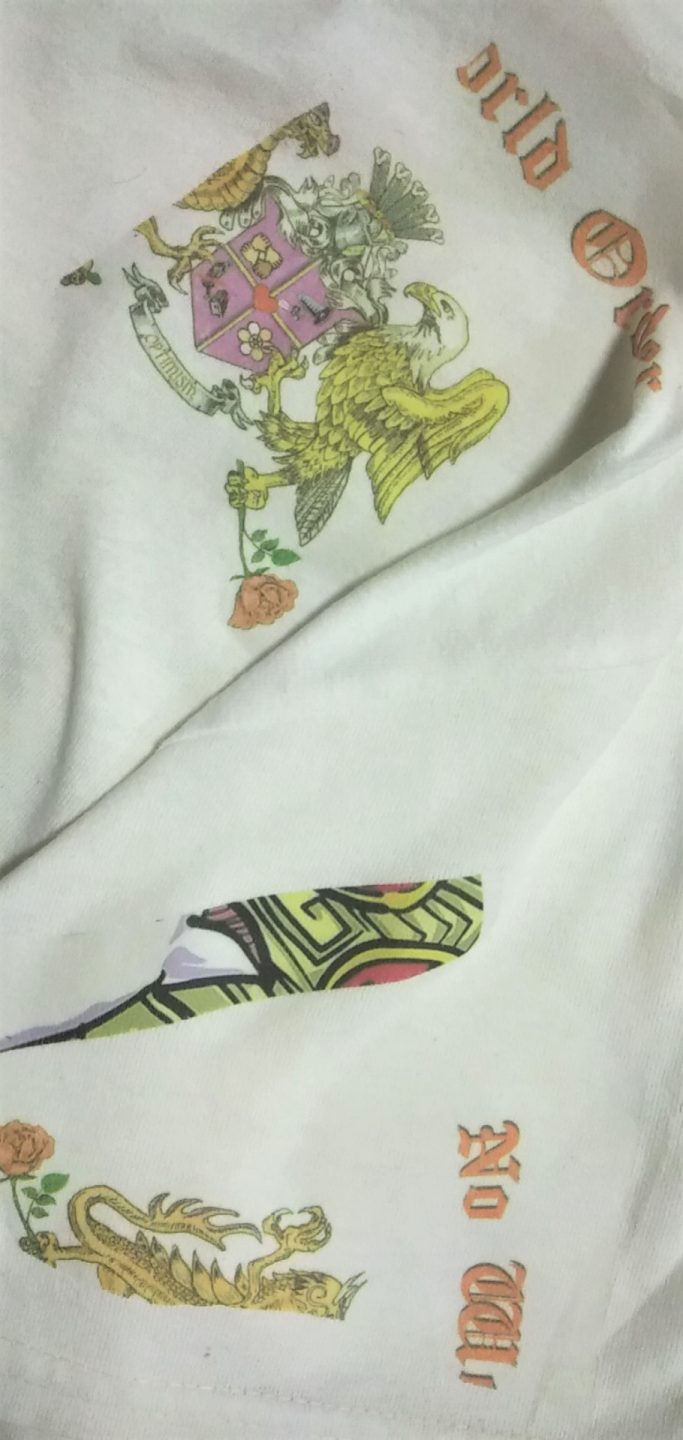
P.S I am An Idiot
What if… I try the 3G Opaque one more time? Because when I peeled the failed design off the t-shirt it did reveal a completed transfer, it just wasn’t adhereing to the material. It was as if…. it needed placing upwards, not down. So I did what any normal person would do in the first place and checked online. Low and behold, I had indeed used it incorrectly. The 3G opaque requires you to peel the design off first, then place it upright onto the t-shirt. The very opposite of a usual heat transfer. This time it worked. It requires just a little cooling down. I was confused about the instructions to ‘cold peel’ thinking this was the paper transfer but it actually just means the silicon sheet that you would always place on top of any transfer to protect it from buring or melting to the press.
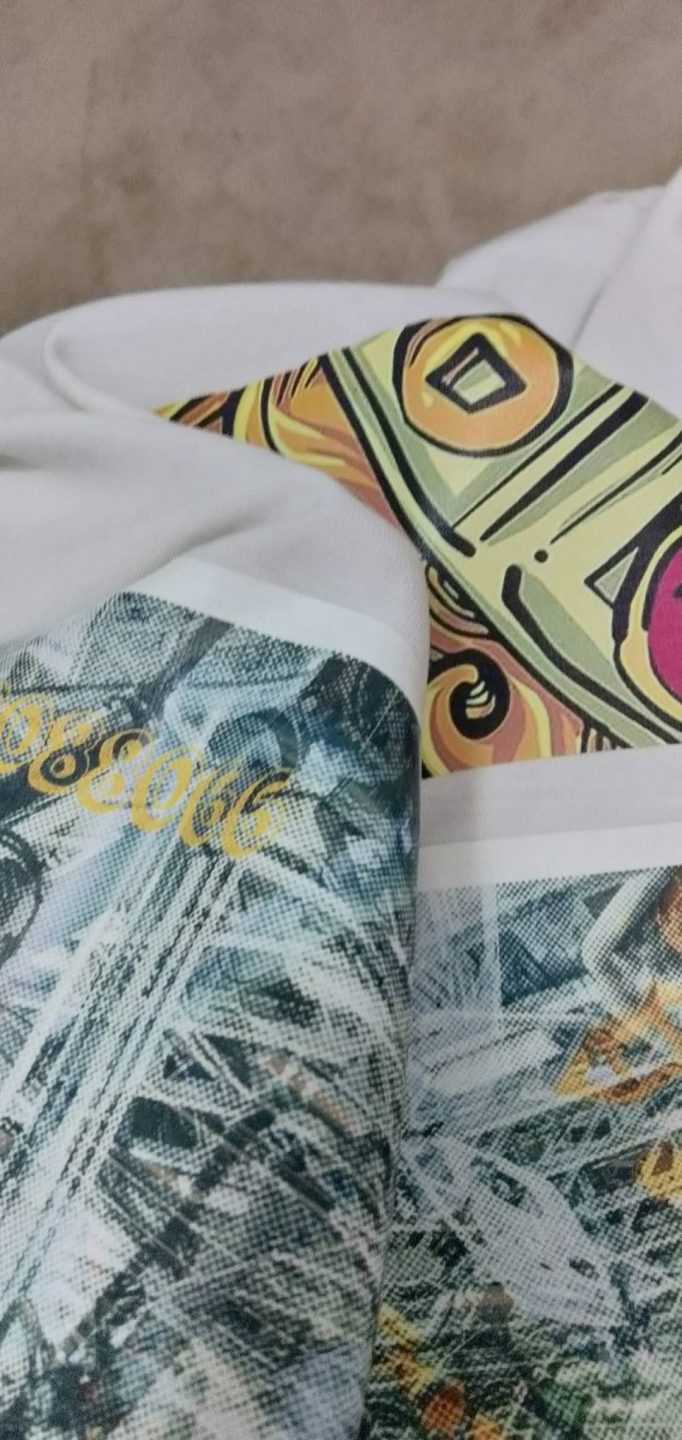
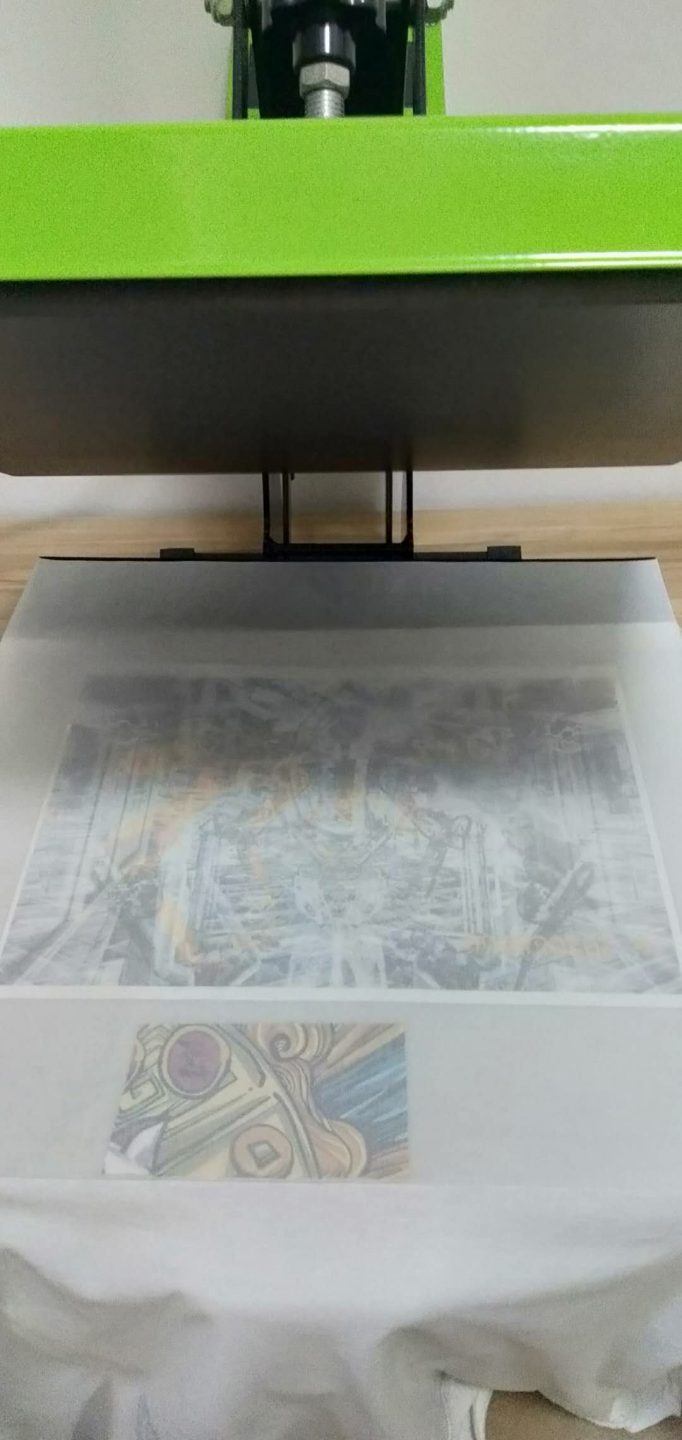
I printed my dye ink on a blank one and retried the pigment-based ink too. Both had good results 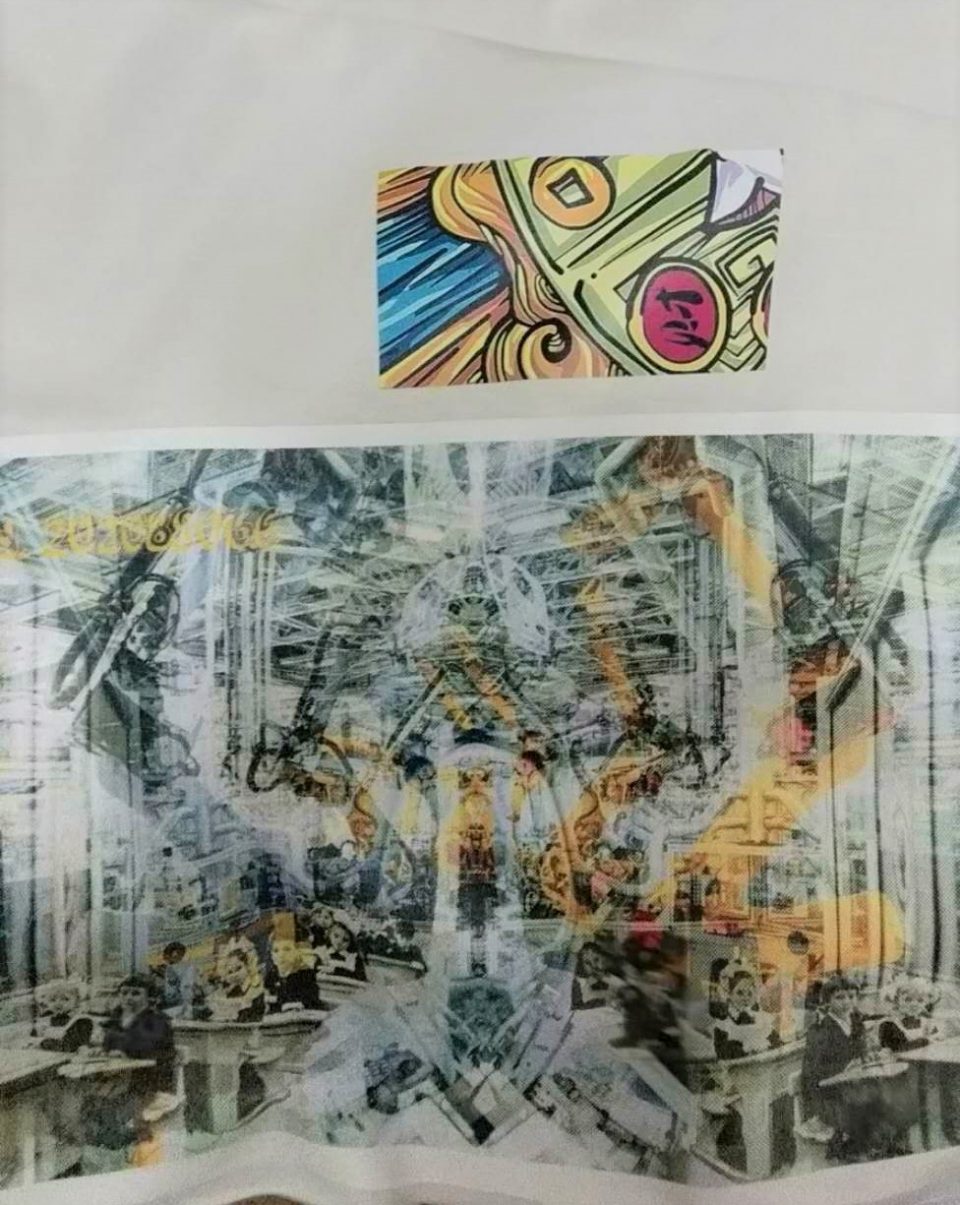
The design was quite decent, in fact it was the best in terms of looking durable and unchanged. But it is close to that sticker ‘plasticky’ quality which I am trying to move away from. It isn’t shiny or too thick like many others and it is a good option for using on harder materials or smaller designs. Some people may not care about this and for them this is a very reliable transfer.
The Underdog Story Is No Good When It Remains Unknown
So the results came in and in what was a beautiful level of irony, the Chinese unknown brand that I hadn’t requested was the winner. The Jet Pro Soft Stretch wasn’t durable or vivd enough. Some people might prefer the Jet Opaque, but for me it isn’t exactly the texture I am looking for. In addition, when I then tested the Chinese transfer paper with my own inkjet printer it came out more durable. Just to remind anyone, the whole reason I contacted the company was because I wanted a well known reliable brand and the reason I took these samples was because the seller said my printer was the problem for the lack of durability. It would appear as always in the land of opposites that is China, that black is white and up is down! Admittedly, my own print was not as vivid and had a more yellow cyan tint than intended, but this could largely have been down to my own software and translation of colouring from Photoshop to print. Of course, I will test this at a later date too. For now, I have no idea what the brand name or specific details of this heat transfer is. I will contact the seller and hope they can throw some light onto this mystery. By the way, well done China, you defeated those expert Yanks with their credible and reliable sources and showed it’s all bullshit anyway.
Finally, durability test… Conclusion
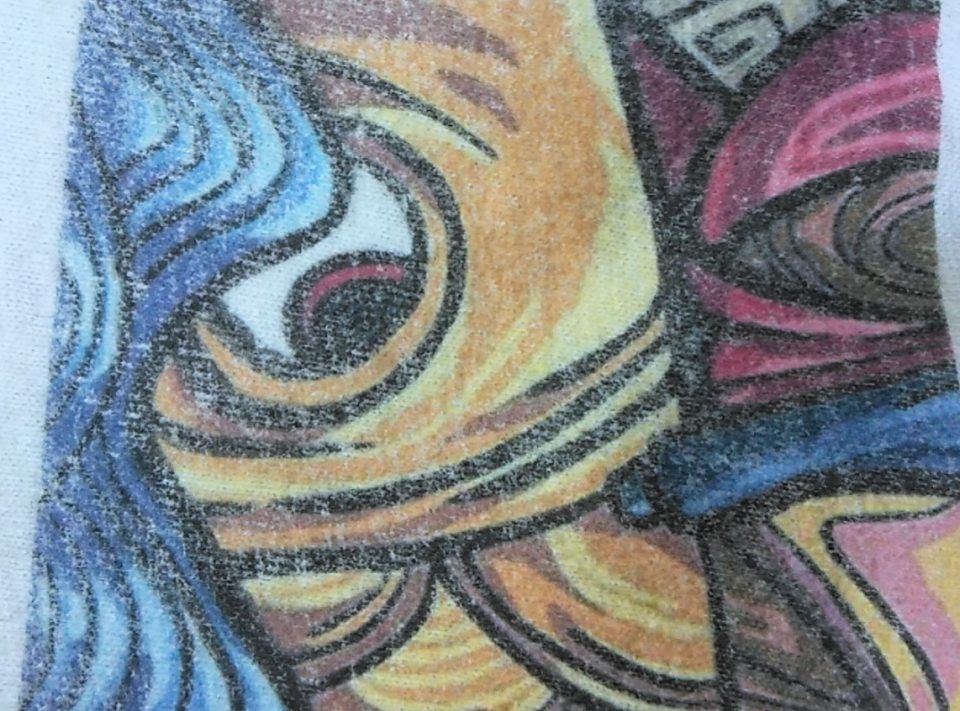
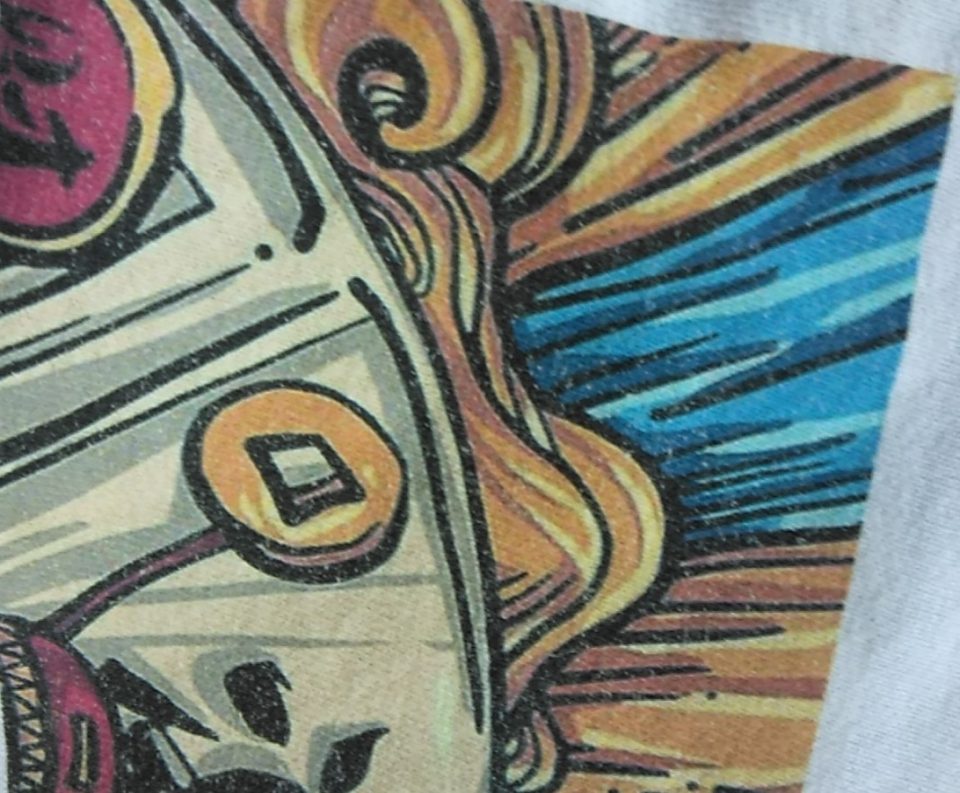

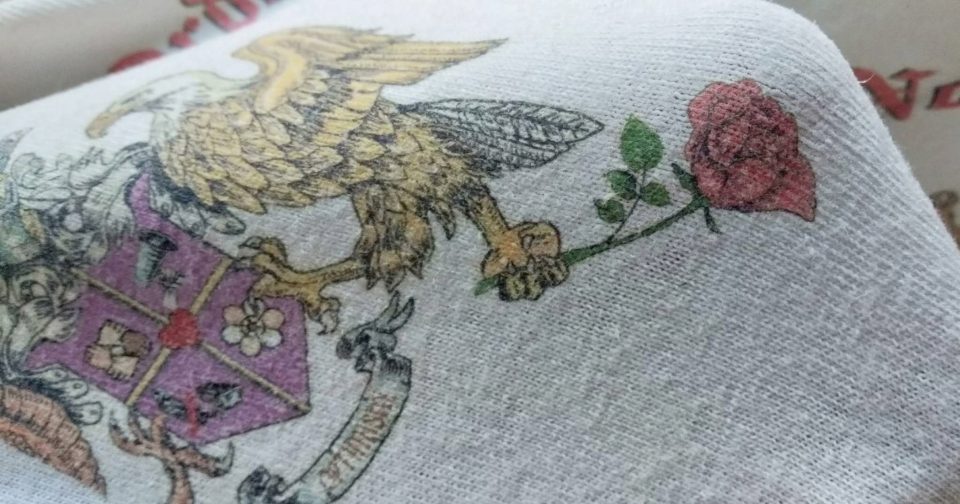
So here is a first wash test results. The Jet Pro soft Stretch continued its path of disappointment and isn’t worth commenting on further. The 3G opaque was unsuprisingly the most durable, since it sits on the material rather than embeds itself. As for the Chinese brand using pigment ink, if you look at the top right you can see there is some deterioration. It isn’t vastly better than my first attempts. But it is better and this was tested with plenty of stretching. The question then remains how long it lasts for and whether it validates switching my ink to pigment based. Well, if we take a look at my own print on the same transfer to the right, we can see that actually, the answer is no. My design has retained its texture and I could not see any real loss of quality. The print itself has artificial ware and degredation owing to the style of the design, so it may appear like colour has flaked, but this is not the case. You can see it looks very embedded too. I also tested another strip of the pigment based ink transfer next to my print and this has managed slightly better than its other pigment counterpart. So there could be a slim chance that my print was just pressed better, but undeniably the potential for a durable, soft and colour retaining transfer is there. So there we go; I’ll go with the Chinese brand and stick with my own ink. I might get some 3G opaque transfers too.
The game is not over just yet and it would appear that the process never ends. My expectation was to find that place of comfort where the technical aspects were secured and I could focus on ideas making and experimenting in design. But I was being short sighted, of course any creative process is a constant relearning of techniques and only by exploring the weaknesses of the technology can you then play with its true creative potential.

